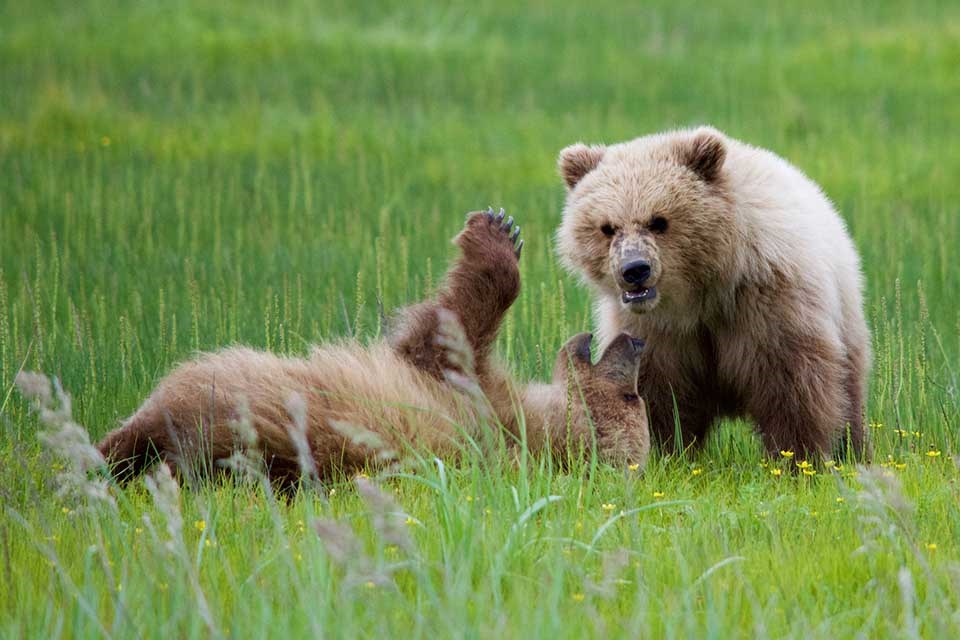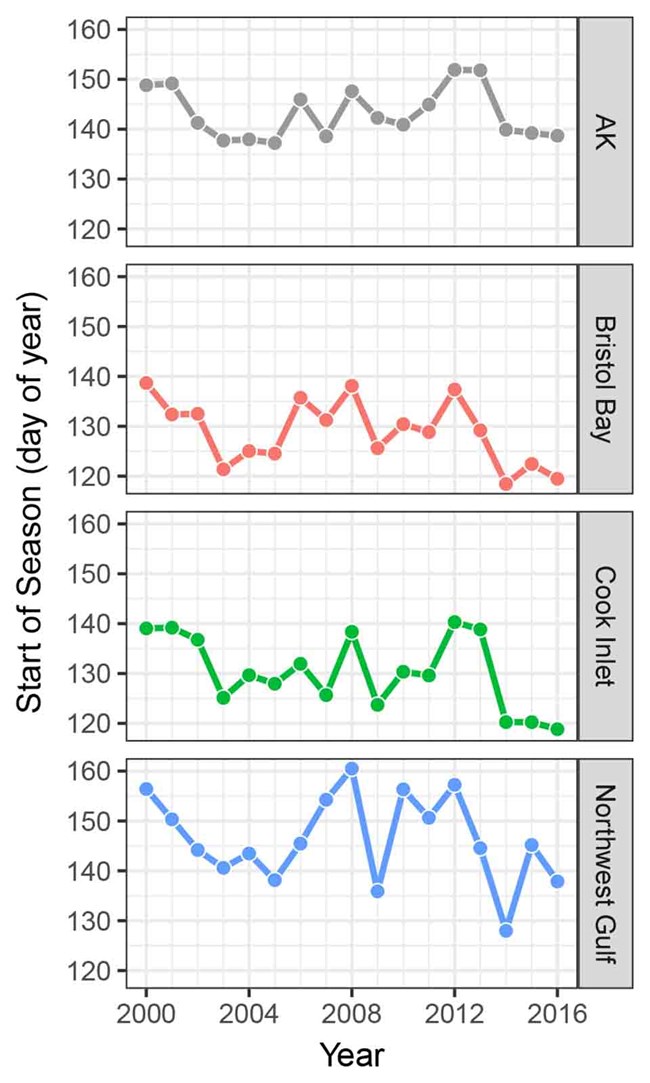Last updated: March 20, 2018
Article
Growing Season Dynamics
Warming is expected to affect the seasonality of ecosystem processes in southwest Alaska, including the length and timing of the growing season, snow season, and lake-ice season. The start of the growing season (green-up) affects wildlife movement, habitat use, and forage availability in the spring, and by extension, the health of the populations using these early season resources.

NPS/Kara Lewandowski
Earlier Green-up Dates in Southwest Alaska
Spring has been coming earlier in recent years and its timing is highly variable in some regions of the state.

Green-up dates for 2014, 2015, and 2016 mark the three earliest years in our 17-year data set for Alaska, and for the Bristol Bay and Cook Inlet climate divisions in southwest Alaska. The consistency in timing of spring green-up across large portions of Alaska suggests that similar climatic conditions (e.g. snowmelt dates; Reed et al. 2009) influence the timing of green-up across much of the region. One exception was the Northwest Gulf, which expressed more year-to-year variability than the other two divisions, and which has not seen the same pattern of earlier green-up. In southwest Alaska, the year-to-year variability in green-up date at a typical site, measured by the standard deviation, was greatest in the Northwest Gulf (15 days), followed by Bristol Bay (13 days), and Cook Inlet (9 days). Earlier green-up dates and high variability in the timing of green-up have the potential to result in phenological mismatches, such as offsets in the timing between the arrival of migrating waterfowl or bears emerging from the den and the availability of protein-rich forage early in the spring. Southwest Alaska may be more susceptible to such mismatches than the Alaska interior, because year-to-year variability is greater in the southwest.
Methods
Moderate Resolution Imaging Spectroradiometer (MODIS) data are being used to monitor growing season and snow season metrics, available online from the University of Alaska (2001-2016; http://www.gina.alaska.edu/projects). Growing season metrics are derived from daily captures of the Normalized Difference Vegetation Index (NDVI), a measure of live (green) vegetation. Time-lapse cameras installed at three remote weather stations capture daily images that provide an independent, fine-scale estimation of seasonality that can be used to validate the MODIS-derived metrics.
Reference
Reed, B., M. Budde, P. Spencer, and A. Miller. 2009. Integration of MODIS-derived metrics to assess interannual variability in snowpack, lake ice and NDVI in southwest Alaska. Remote Sensing of Environment 113:1443-1452.
